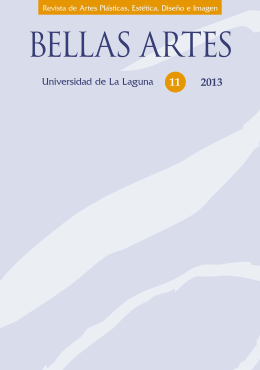Los cuadros de fusilamientos en el siglo XIX. Una discusión de intenciones
Resumen
Con Los Fusilamientos del Tres de Mayode Goya, comienzan los cuadros alusivos a este tipo de ejecución. En el siglo xix, el tratamiento más académico prefería otra escenificación al tema. Este trabajo estudia las relaciones de las versiones de «fusilamientos» de Goya y Manet (La ejecución de Maximiliano de Méjico) y su contexto con otras obras similares. La tercera obra principal a tratar el Fusilamiento de Torrijos de Gisbert, que está entre la academia y la influencia de Goya. Se demuestra que, especialmente con Goya y en menor medida con Manet, el artista se toma algunas licencias del relato documental del suceso. En Goya, los soldados son arquetipos inventados y no corresponden a unidad o tipo alguno directamente. Se comparan las intenciones, la composición y otros elementos de los cuadros de fusilamientos, estableciendo un sistema de relaciones.
Citas
(1) reynald, Secher. A French Genocide. indiana: University notre dame Press, 2003.
(2) Stoichita, Victor i . Breve Historia de la Sombra. madrid: Siruela, 1999.
(3) Lecaldano, Paolo. Goya, los desastres de la guerra.madrid: Prensa Española, 1976.
(4) Haskell, Francis. Pasado y presente en el arte y en el gusto.madrid: alianza. 1989.
(5) dufour, Gérard. Goya durante la guerra de la independencia. madrid: Cátedra. 2008.
(6) martínez Canales, Francisco. Madrid 1808-13 (madrid: almena, 2008).
(7) mena márquez, manuela. Goya: guía de sala, madrid: tf, 2008.
(8) Bueno, José mª. Los franceses y sus aliados en España1808-1814, vol. i. madrid: Falcata, 1996. Y vol. ii, málaga: Grunoel, S.L., 2002.
(9) Haythornthwaite, Philip. Napoleon’s Guard Infantry 2. London: osprey, 1985.
(10) Jounieu y mongin, J.m. The French Imperial Guard. I The foot soldiers, 1804-15, París: His-tore&Colections, 2002.
(11) Licht, Fred. Goya, The Origins of the Modern Temper in Art. new York: Universe Books, 1979.
(12) Honour, Hugh. Romanticism. Boulder, Colorado: Westview Press, 1979.
(13) Hughes, robert. Goya. Barcelona: Galaxia Gutenberg / Círculo de Lectores. 2005.
(14) Wölfflin, Heinrich. Conceptos fundamentales para la historia del arte,madrid: Espasa-Calpe, 2 0 0 7 (1915).
(15) díez, José Luis. «Evolución de la pintura española de historia en el siglo xix», en La Pintura de historia del siglo xix en España. madrid: museo del Prado, 1999.
(16) reyero, Carlos. «Los temas históricos en la pintura española del siglo xix» en La Pintura de historia del siglo xix en España. madrid: museo del Prado, 1999.
(17) Hagen, rose-marie y Hagen, rainer. Francisco de Goya. Colonia: taschen, 2003.
(18) tomlinson, Janis. Goya and the Twilight of Enlightenment, Yale University Press, 1992.
(19) ridley, Jasper. Maximilian & Juarez. London: Phoenix Press, 2001.
(20) orienti, Sandra. Edouart Manet. Barcelona: Clásicos del arte, noguert rizzoli, 1972.
(21) Funcken, Liliane und Fred. Historische Uniformen. Napoleonische Zeit, 18. und 19. Jahrhundert, münchen: orbis Verlag, 1989.
(22) tin t e row, Gary. «raphael replaced: The triumph of Spanish Painting in France» en Manet/Velazquez: The French Taste for Spanish Painting, new York: metropolitan museum, 2003.
(23) VV.aa. Manet en el Museo del Prado (madrid: museo del Prado, 2003).
(24) Bornay, Erika. Historia Universal del Arte s. xix, vol. 8. Barcelona: Planeta, 1986.
(25) Houellebecq, michel. El mapa y el territorio,madrid: anagrama, 2011.
(26) Brombert, Beth archer. Edouard Manet : Rebel in a Frock Coat. University of Chicago Press, 1997.
(27) argan, Gulio Carlo. El arte moderno 1. Valencia: Fernando torres, 1975.
(28) díez, José Luis: «Catálogo», en La pintura de historia del siglo xix en España. madrid: museo del Prado, 1999.
(29) Glendinning, nigel. Francisco de Goya, madrid: alianza, 2005.
(30) Bueno, José mª. ...Soldados de España. madrid: almena, 1998.
(31) VVaa. «Pintores del siglo xix» en Diccionario de Arte, méxico: LiBSa, alianza méxico, 2001.(32) Stoichita, Victor i. Cómo saborear un cuadro, madrid: arte Cátedra, 2009.
Los trabajos publicados en esta revista son propiedad de sus respectivos autores y autoras, quienes conceden a la revista Bellas Artes el derecho de primera publicación, tal y como se recoge en nuestra Política de derechos de autoría.




